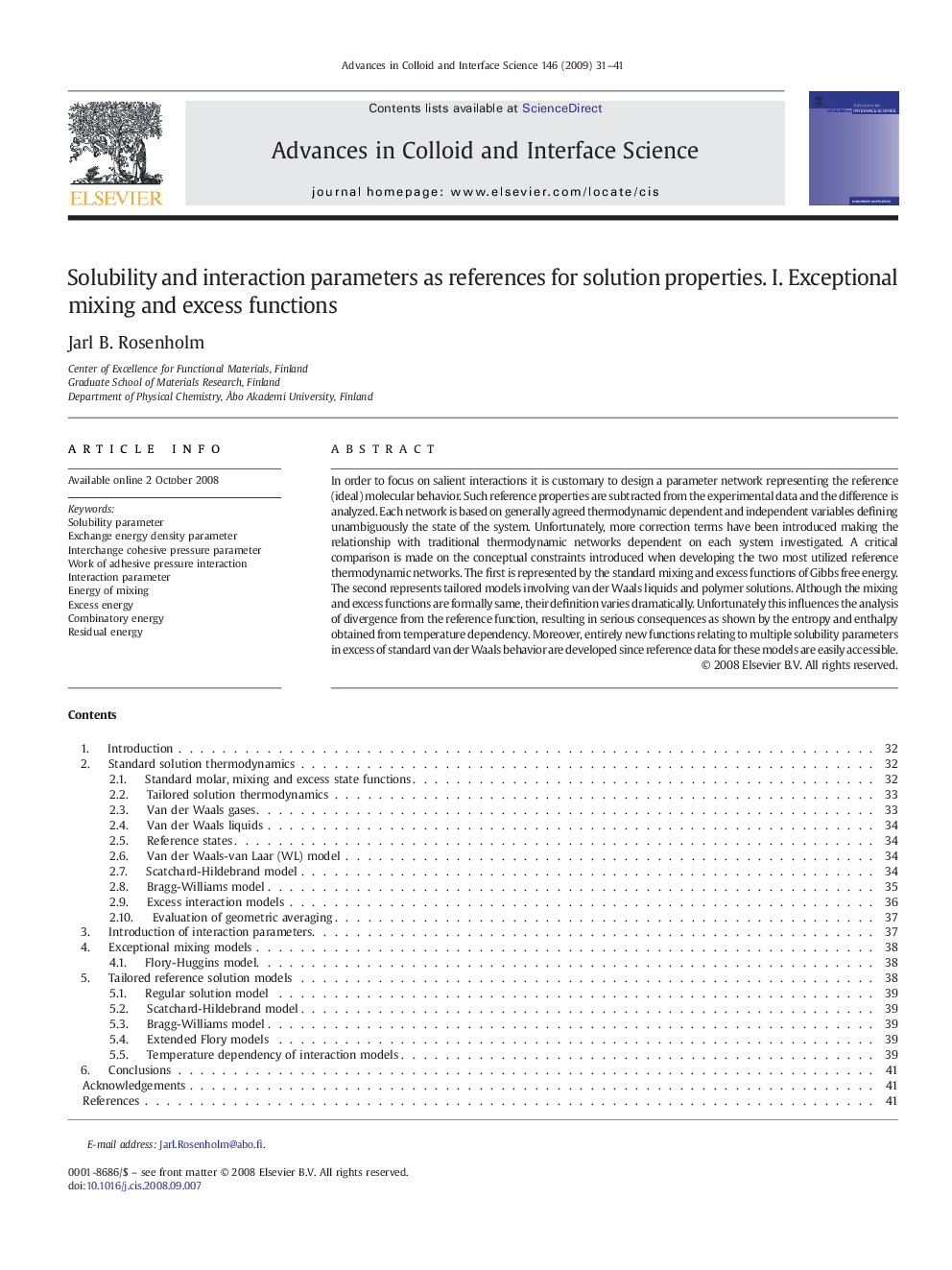| Article ID | Journal | Published Year | Pages | File Type |
|---|---|---|---|---|
| 591173 | Advances in Colloid and Interface Science | 2009 | 11 Pages |
In order to focus on salient interactions it is customary to design a parameter network representing the reference (ideal) molecular behavior. Such reference properties are subtracted from the experimental data and the difference is analyzed. Each network is based on generally agreed thermodynamic dependent and independent variables defining unambiguously the state of the system. Unfortunately, more correction terms have been introduced making the relationship with traditional thermodynamic networks dependent on each system investigated. A critical comparison is made on the conceptual constraints introduced when developing the two most utilized reference thermodynamic networks. The first is represented by the standard mixing and excess functions of Gibbs free energy. The second represents tailored models involving van der Waals liquids and polymer solutions. Although the mixing and excess functions are formally same, their definition varies dramatically. Unfortunately this influences the analysis of divergence from the reference function, resulting in serious consequences as shown by the entropy and enthalpy obtained from temperature dependency. Moreover, entirely new functions relating to multiple solubility parameters in excess of standard van der Waals behavior are developed since reference data for these models are easily accessible.
